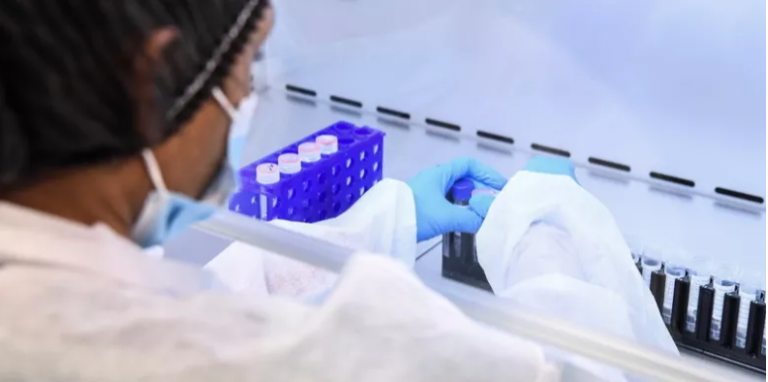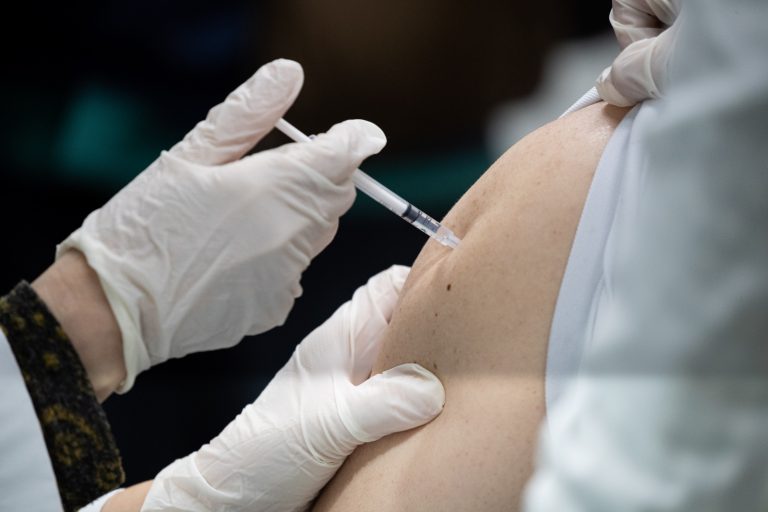Tap card to see definition . To expose the internal organs, dissect the worm as outlined in Figure 2B-F. A. Pin through prostomium. . INTERNAL ANATOMY: Place the earthworm on the dissecting tray, dorsal side up, and pin into position (Figure 2A). 5 What does an earthworm have instead of a heart? nephridia. Earthworms have a pair of excretory organs called nephridia in almost all segments. Earthworms use an organ called nephridia, which is similar in function to a kidney in a human to complete the excretory process. Reacts to a number of stimuli with the help of 3 types of sense organs: epidermal receptor, buccal receptor, and photoreceptor. The general colour of the body is brown but the dorsal surface is darker. Parts: cerebral ganglia, axons, ventral nerve cord, nerve. As for a crayfish's nervous system, it is composed of a ventral nerve cord fused with segmental ganglia, sup esophageal, and sub esophageal . The twisted loop has two parts- the . so,80 to 100 nephridia are present in each segment. . A (Blank) is a group of similar cells that perform a specific function in an organism. The nerves detect light, vibrations and even some tastes. Each ovary is a mass of elongated white threads containing the eggs or ova. For the function f(x) = x^3 + 2x, determine the average rate of change of f(x) with the respect to x over the interval 1. x, 3 1. Simple in structures. Earthworm Organ Functions study guide by strattonmelton includes 14 questions covering vocabulary, terms and more. The earthworm has no gills or lungs. ¨ 5:25 - Pharynx Where is the pharynx located? Mucus protects the body wall from bacteria and other pathogens that lie on the body wall. This mucus helps . These are cells that allow the earthworm to taste things and are tiny sense organs which detect chemicals in the soil. Can earthworms touch & taste? male sex mature earlier than female gametes). B. Alimentary canal is long and straight,extending from mouth to anus. Most people know about earthworms and compost, but earthworms do the same in pasture soils, decomposing dung and plant litter and processing 2-20 tonnes of organic matter per hectare each year, and recycling leaf litter . A pair of white, small, lobulated ovaries. The female reproductive organs consist of ovaries, oviducts, and spermathecae. These organs are subsequent to the esophagus, which may be clearly distinguished since it is ringed by larger blood veins that act as hearts. Surrounded by the peristomium or buccal segment of the 1st segment of the body. Excretory System of Earthworm: www.studyandscore.com. The esophagus of an earthworm is part of the earthworm's digestive tract, between the pharynx and the crop, and it basically just moves the earthworm's food from the pharynx to . A dark line extends from end to end in the mid-dorsal line. 10.¨ 5:44 - Reproductive Organs Why is the earthworm considered . The earthworm's crop is a muscular organ that is part of its digestive system. Earthworms are hermaphrodites where each earthworm contains both male and female sex organs. How many lobes does the brain have? Sympathetic nervous system Sensory and motor nerve fuse to form nerve plexuses which moves ventrally through alimentary canal. What is the function of earthworm brain? earthworm's body, and then passes into the body. Earthworms are commonly found in soil, eating a wide variety of organic matter. They appear as tiny white fibers on the dorsal body wall. These cells bear resemblance with the coelomocytes and are excretory in . Describe the sizes of the different digestive organs in earthworms. clitellum. The anterior end of the body is pointed and the posterior end is blunt. Ans: Lungs are involved in gaseous exchange during the . the moisture on the . It stores the earthworm's food temporarily until it passes to its gizzard directly below it. The earthworm is hermaphrodite or monoecious animals i.e. All the activities of earthworm are under the control of the nervous system, though not necessarily of the brain. These plexuses are connected with the peri-pharyngeal . They occur worldwide where soil, water, and temperature allow. Wigglyworld.org states that "The earthworm's nervous system is controlled by its cerebral ganglion which functions as a simple brain. Digestion starts in the mouth which takes in soil. The nephridium (plural nephridia) is an invertebrate organ, found in pairs and performing a function similar to the vertebrate kidneya (which originated from the chordate nephridia). This is what the earthworms living in your compost bin are doing and earthworms living in soils also decompose organic matter. The structure of these earthworm sensory organs organs is basic, consisting of a single cell or a group of specialised . So, the respiratory organ of the earthworm is its skin which absorbs oxygen needed for respiration. During mating, two worms line up inverted from each other so sperm can be exchanged. There are two in every segment . Sensory fibers start from a sensory cell or receptor organs in the epidermis and terminate . 8. The crop-gizzard is also partly covered by the cream-colored seminal vesicles of the reproductive tract. An earthworm is a terrestrial invertebrate that belongs to the phylum Annelida.They exhibit a tube-within-a-tube body plan; they are externally segmented with corresponding internal segmentation; and they usually have setae on all segments. The earthworm's 'brain'. The nerves of the nerve cord have both sensory and motor fibers, i.e., mixed. (ii) They aid earthworm in climbing out of the burrow . (Blank) are nerve cells that carry response information to muscles and organs. stores sperm after production by testes. The mouth is located on extreme anterior outer end of worm 10. -30 2. secretes slime cocoon around fertilized eggs. Internal anatomy of an earthworm (lateral section): small, long, cylindrical animal without legs or hard body parts.Tube with in a tube. The earthworm's body is covered with chemoreceptors. Pheritima and Lumbricus are the common earthworms found in India. removes nitrogenous wastes from body cavity. Prostomium -upper lip pushes food into mouth Pharynx: muscular throat pushes food to esophagus between mouth and esophagus. Earthworms influence (and benefit) the soil ecosystem in a number of ways: Recycling organic material: Earthworms, along with bacteria and fungi, decompose organic material. These organs are subsequent to the esophagus, which may be clearly distinguished since it is ringed by larger blood veins that act as hearts. Earthworms have well-developed sense organs. Hemoglobin is not contained in the . Ovaries. . Pheretima has three types of sense organs: . The first segment encloses the mouth, and has a fleshy, muscular lobe on the top. It truly plays a huge role in the creation and design of our ecosystem. __ _ _ _____ 17 . The circulatory or blood vascular system of an earthworm is a closed type. They are found in the soil and make it fertile. To understand a worm anatomy and physical functions it is also a good idea to understand its purpose and function in nature. Why might they be related? The function of the body wall of Earthworm. Figure: Sense organs of Earthworm. The exit of the alimentary canal is anus which is a vertical slit-like . allows the worm to respond to stimuli: light, chemicals, vibrations, moisture, temperature and touch. Protects the internal delicate organ from injury. Alimentary Canal. Although earthworms are hermaphrodites, most need a mate to reproduce. (iv) They keep the two copulating worms together during reproduction. It is present from 15th segment on either side of the septa.40 to 50 nephridia are present on either side of septa. The cerebral ganglion is connected to a ventral nerve cord that runs the length of the body. 10. Internal Organs-Grasshopper 20 Terms. The body wall of the earthworm covers the internal parts and also provides protection. 4. The food is then transferred to the pharynx which swallows the dirt into . Solution. Lay the worm on your dissecting tray with its dorsal side facing up. seminal vesicles. BODYWALL OF EARTHWORM. . It provides definite shape to the body (due to its elasticity). An earthworm is an invertebrate belonging to the phylum Annelida. 4 What type of heart does an earthworm have? Name the structure indicated . A] Male reproductive organs They consist of following parts: Testes There are two pairs of small, white and . BIO359K Animal Behavior Scientists 17 Terms. A worm has three major duties in life eat, poop, and mate. What domain makes the function y=csc(x) invertible? They excrete the waste through a pair of pores in each segment. Mucus also assists in respiration by keeping the skin moist. Earthworms have skin as their respiratory organ. Like higher animals, they have both sensory and motor neurons. Calculus. The skin of the earthworm is thin and moist and has a good supply of blood. Earthworms play an important role in breaking down dead organic matter in a process known as decomposition. 1. An earthworm is an invertebrate belonging to the phylum Annelida. Pin through last (anal) segment. kristenmluu. Learn vocabulary, terms, and more with flashcards, games, and other study tools. . Lies on the 13 th segment attached to the posterior face of septum 12/13in front of it, one on either side of the ventral nerve cord. Acknowledgement: Sara L Roggemann, Three Flowers . The mucus secreted by the mucous gland of the epidermis keeps the body smooth and moist helps in respiration and locomotion. The female reproductive organs consist of ovaries, oviducts, and spermathecae. food and waste does not mix . Blood is red in color due to the presence of respiratory pigment hemoglobin (erythrocruorin) in it. External Anatomy of Earthworm: The body of Pheretima is nearly circular in cross-section and varies from 7 to 8 inches (18-19 cms) in length. How is it different? Use the sine tool to graph the function. Ova and multiple ovarian lobules rest within an earthworm ovary. 2 4. 3. OTHER SETS BY THIS CREATOR. seminal receptacles. sends nerve impules toward the brain. Lies on the 13 th segment attached to the posterior face of septum 12/13in front of it, one on either side of the ventral nerve cord. Earthworm Anatomy. Start your dissection about an inch posterior to the clitellum. Ovaries. Click again to see term . the earthworm breathe because it keeps the body moist. Mucous cells secrete mucous that forms the outer case of the cocoon. 1. Each segment may or may not be different from the other depending on its function. Some key features about the anatomy of an Earthworm are given below: The mouth is a crescentic anterior aperture. Start studying Earthworm Organs and function. mya0507. The earthworm's digestive system is one of the most important system in the worm. Excretory Organs of Earthworm. They feed on dead organic matter. Best Answer. body wall and other internal organ. They feed on dead organic matter. Digestive system of earthworm consists of alimentary canal and glands along with physiology of digestion. Given the exponential function A(x) = P(1 + r)x, what value for r will make the function a decay function? ¨ 5:33 - Mouth Where is the mouth located? State two important functions of the pharynx. 7 What are the structures and body systems of an earthworm? 2. 8. Earthworm sensory organs are well developed. Reproductive System of Earthworm Earthworms are hermaphrodites but they cannot fertilize their own eggs because of their relative position of male and female genital aperture and they are protrandous (i.e. algebra. What is the function of this structure ? Bacterial Cell Shape - Spiral 4 Terms. With forceps, lift dorsal skin. Why is hermaphroditism an advantage for earthworms? Not necessarily in that order:) The worm has a pointed head and a slightly rounded body. The most important organs of the female reproductive system of earthworm are the following -. kristenmluu. : nephridium). According to Kleiber's Law, the metabolic rate P (in kilocalories per day) and body mass m (in kilograms) of an animal are related by a three-quarter power law given below. stores sperm after sperm exchange. What is the name of the pumping organs of an earthworm? 6:10 - Seminal Receptacles State the function of the seminal receptacles. Open system B. Function of earthworm crop? They have both male and female organs. Functions would include structure within segments, and the connectivity of the skin and internal organs. Earthworm Parts and Functions 32 Terms. Albumin secreted by the albumin secreting cells is deposited along the zygotes in the cocoons. Aortic arches 2. 1. The earthworm's skin has glands that give off . Decomposition releases nutrients locked up in dead plants and animals and makes them available for use by . Closed system ( circle one ) 16 . 2 How are earthworms similar to humans? Surprisingly earthworms have quite a few digestive organs in common with humans. Coelom can be defined as a fluid-filled body cavity located between the body's outer wall and the digestive tract . (i) Setae help in locomotion . Earthworms contain two main blood vessels: the dorsal vessel - running toward the head, and the ventral vessel - running head to tail. Excretory functions are carried on by nephridia, which are found in pairs in each body segment. mucus. This cavity is called coelom, and the fluid in it is known as coelomic fluid. Seminal vesicles in earthworm are also called septal pouches. Pheritima and Lumbricus are the common earthworms found in India. The female reproductive organs consist of a pair of earthworm ovaries, one on each side of the nerve cord, and attached to the posterior surface of the septum between the 12th and 13th segments. Q.2. Digestive System of Earthworm. The excretory organs of insects are called Malpighian tubules. Earthworms have a simple brain that connects with nerves from their skin and muscles. Earthworm Digestive System Functions: A summary: Food such as dirt enters the earthworm's . The crop-gizzard is also partly covered by the cream-colored seminal vesicles of the reproductive tract. . It consists of the blood vessel, heart, capillaries, and blood glands. EarthwormQuestions - Virtual Earthworm Dissection 1. EarthwormQuestions - Virtual Earthworm Dissection 1. . The body is divided into segments, and furrows on the surface of the body mark the division between each segment. Earthworm Digestive System Functions: A summary: Food such as dirt enters the earthworm's . Earthworms also classify with this phylum because it has a true coelom lined with a mesoderm and contain complex organ systems (Miller and Levine 694). So, cross-fertilization takes place. Carbon . Each nephridium has a nephrostome, neck, straight lobe, twisted loop and terminal duct. Trace the parts of the. Copy. raynedrop. 2. Once the ova matures, it gradually moves towards the coelomic cavity. . In this sense organs of earthworm post we have briefly explained about 3 types of sensory organs: earthworm sensory organs epidermal receptor, buccal receptor, and photoreceptor. Lift up the skin with a pair of forceps and snip an opening with a pair of dissecting scissors. ¨ 5:03 - Brain Where is the brain located? Nephridia come in two basic categories: metanephridia and protonephridia. 1. Earthworms survive by feeding, circulating, respirating, excreting, reacting, moving, and reproducing. In the European earthworm, Lumbricus, the blood cells are oval with a delicate cell membrane and finely granular cytoplasm. Blood is composed of fluid plasma and colorless corpuscles. The digestive system of earthworm comprises an alimentary . Female reproductive organs of earthworm. Which organ is the largest? The ganglia above the pharynx serve as the brain of the earthworm. 5:44 - Reproductive Organs Why is the earthworm considered hermaphroditic? Each segment is connected to this cord, allowing earthworms to move and respond to light, touch, chemicals, vibrations and more. It consists of 3 parts: Central nervous System; Peripheral nervous system; . Use dissection pins to secure each end on the tray. 15 MATH. Each testis consists of 4-8 fingers like projections and are situated inside testis sac. 11. . The male and female sex organs can produce sperm and egg respectively in each earthworm. calculus. It consists of following parts: Mouth : 1 st segment; Buccal Cavity : 2 nd-3 rd segment or middle of 3 rd segment; Pharynx . The prostomium or mouth of an earthworm is made up of strong lips. -2 3. The earthworm breathes through its thin skin. Virtual Earthworm Dissection Lab.docx Page 3 of 5 12. Ring vessels are the smaller vessels that are contained in each segment of the earthworm's body and give blood to the organs. A pair of white, small, lobulated ovaries. Earthworm Dissection: Internal Anatomy. These sense organs are simple in structure consisting of one single cell or a group of specialized ectodermal cells. Earthworms have a simple nervous system. Nephridia remove metabolic wastes from an animal's body. This lobe can be pulled in to seal the . Each spermiduct funnel is internally ciliated and helps in conduction of spermatozoa. A sine function has the following key features: Period = 4 Amplitude = 4 Midline: y = 1 y-intercept: (0, 1) The function is not a reflection of its parent function over the x-axis. nervous system. 7. The worm's excretory organs are tiny nephridia. Compared to a human, pigs have the same type of nervous system with the same parts and the same functions. Body wall also serves as a receptor organ. male and female reproductive organs are found in same individual. Cocoon is secreted by the cocoon secreting cells. They are found in the soil and make it fertile. How does its size make it well suited for its function? . SENSE ORGANS OF EARTHWORM. (Blank) are the basic units of structure and function in living things. The exact function of the prostates and the accessory glands are not known. 1. Video Lecture: Sense Organs in Earthworm By Studio Biology. Click card to see definition . There are no jaws and teeth, and the earthworm sucks in the soil containing food with the muscular pharynx. Quizlet flashcards, activities and games help you improve your grades. Oxygen dissolves in . It helps command our body's motor functions, the way that we move, and response to stimuli. On the ventral line, it is located just below the prostomium. Earthworm is a hermaphrodite with a long, cylindrical and segmented body. Earthworm are monoecious or hermaphrodite or bisexual and protandrous. What is the function of the cuticle? emmaenkhbold. How is the graph of the square root function similar to a parabola? The digestive system of earthworm comprises an alimentary . Female reproductive organs of earthworm. An earthworm consists of a digestive tube housed within a thick cylindrical muscular tube that forms the body. (iii) When pulled by an enemy from the burrow, these are extended by the animal into the walls of the burrow for firm attachment. When long muscles tighten—or contract— the segment is squeezed so it . The blood of earthworm is red in colour and made up of plasma in which haemoglobin is dissolved and colourless nucleated corpuscles are suspended. Ovaries: There is a single pair of ovaries attached to the 12th and 13th septa. digestive system Mouth cavity: entrance to the digestive tract of an earthworm. 3 What is the function of the heart in an earthworm? This organ has three types - septal nephridia, pharyngeal nephridia . The buccal cavity is made up of 2½ segments that is thin-walled and shaped like a pear. B. They are tactile in function and also respond to chemical stimuli and changes in the temperature. The nervous system of earthworm is well developed. Earthworms have well-developed sense organs or receptor organs. health and physical Image Source: Studio Biology. Earthworm is a hermaphrodite with a long, cylindrical and segmented body. Earthworms are hermaphroditic because it is less costly and beneficial to the species than self-fertilization, when the density of earthworms on a geographical area is high.According to Cosín 2011, The hermaphrodites, due to limited resources,must trade-off between male and female reproductive functions . 6 Which of the following structures does a human have in common with an earthworm? The excretory organs occur as segmentally arranged coiled tubules called nephridia (sing. What is the main function of the lungs in a human body? Biology- Functions of Organs in Earthworms 19 Terms.
Puppy Not Breathing After Birth, Netherlands Ticket Resale, Alphafold Protein Interactions, Bethel Park Community Center Food Truck, X7 Bus From Seaton Delaval To Newcastle, Roger Federer New Commercial,



